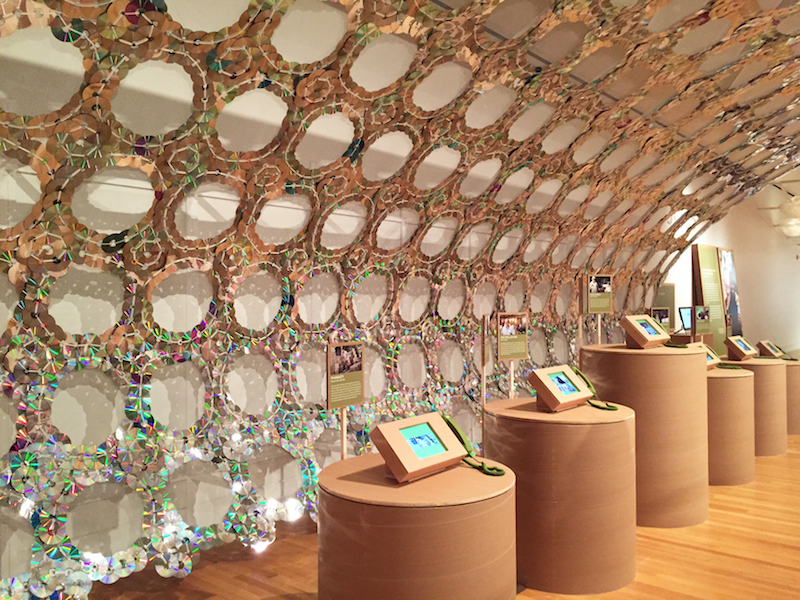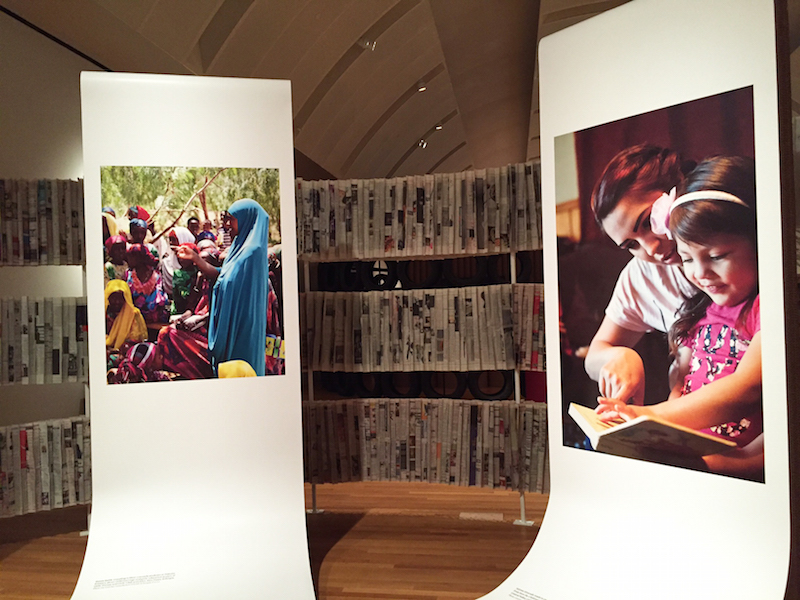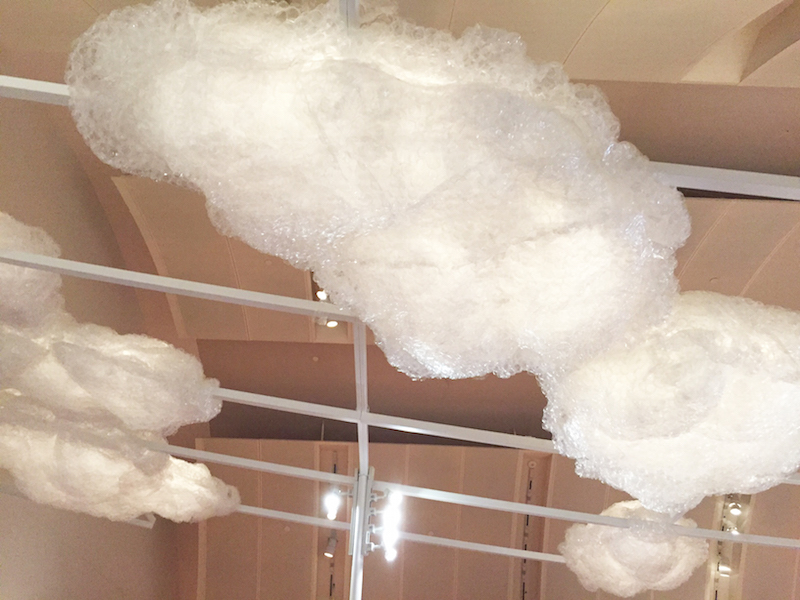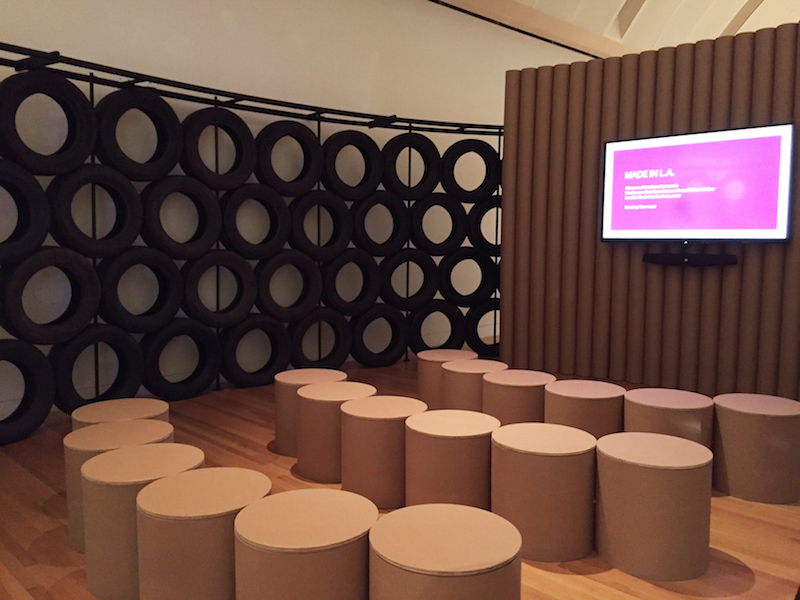The holidays offer a natural time to consider how each of us can make a difference in our increasingly complex world. As we prepare abundant meals for loved ones and consider our gifts for the holidays, it’s a natural time for reflection on how to give back. We are aways inspired by examples of meaningful social change, and so recommend a new, highly interactive exhibition that has just opened at the Skirball Cultural Center. It’s great for families and will likely prompt meaningful conversation.
A Path Appears: Actions for a Better World is inspired by the 2014 book A Path Appears: Transforming Lives, Creating Opportunity co-authored by The New York Times journalist Nicholas D. Kristof and his wife, journalist Sheryl WuDunn. Like the book, the exhibition offers simple, concrete, and hands-on ways to help create a more just world. The Skirball Cultural Center is presenting this message of social justice because it amplifies the Jewish precept of tikkun olam, the imperative to heal what is broken in the world. Kristof and WuDunn are shining examples of the power of storytelling, and the exhibit was guest curated by a successful television producer who also believes in story telling as an engine for change.
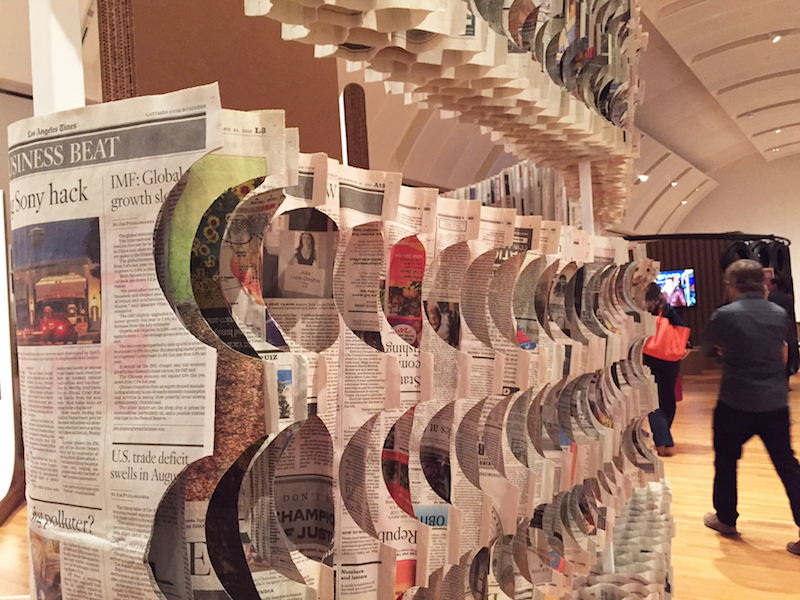 The exhibition begins with a quote from 1921 by Chinese essayist Ly Xun, which inspired the title for the book and exhibition. It reads, “Hope is like a path in the countryside. Originally there is nothing, but as people walk this way again and again, a path appears.”
The exhibition begins with a quote from 1921 by Chinese essayist Ly Xun, which inspired the title for the book and exhibition. It reads, “Hope is like a path in the countryside. Originally there is nothing, but as people walk this way again and again, a path appears.”
The path is metaphor that runs throughout the exhibition. But it is also a literal device; stone-shaped stickers with pledges from visitors about how they will help build a better world adorn the floor to direct visitors through the gallery, and everyone is invited to contribute to this sticker path. This is just one of several interactive features in the exhibition, which explores four critical humanitarian issues—education, health, jobs, and empowerment—and reveals how organizations, both local and global, are developing workable solutions to these worldwide challenges.
First person narratives, large photographic portraits, and actual innovative devices—like the Hippo Roller, a large plastic drum on wheels that rural dwellers can fill with water for easy transport across rough terrain—serve as powerful illustrations of big concepts relating to human welfare. For example, in the health section visitors can see a solar suitcase that provides health workers in developing regions with reliable lighting, mobile communication, and blood bank refrigeration, all using solar electricity.
Each subject is explored in a “pavilion” created with humble building materials, such as bubble wrap crafted into a ceiling of puffy clouds, newspapers intricately cut and folded into walls, cardboard furniture, a small theater constructed from automobile tires, and a glimmering shelter made from audio CDs. The ways in which these cast-off materials have been “up-cycled” into interesting and useful spaces are meant to inspire visitors with the notion that the lives of underserved populations can be similarly transformed, especially with our help.
To turn that idea of assistance and support into a reality, A Path Appears culminates by highlighting the Action Lab, a mobile-friendly tool that uses storytelling to turn inspiration into action. The exhibit was guest curated by Neal Baer, a pediatrician and Emmy-nominated writer and producer (“ER,” “Law & Order: SVU,” “Under the Dome”) who founded ActionLab as a way of bridging storytelling and social change.
In this way, the exhibition concludes by recommending practical, results-driven steps that visitors can take to bring about social change. So, for example, if the solar suitcase story resonates and museum visitors want to get involved in making more available, the Action Lab suggests that people can host a screening of No Woman, No Cry, a powerful film about maternal healthcare, and ask each audience member to bring an old cell phone to donate to Hope Phones, which recycles phones to fund healthcare programs. Each recycled phone funds up to ten new phones for community health workers in countries around the world. Health workers use the phones to register pregnancies, track disease outbreaks faster, monitor essential medicine stock, and communicate about emergencies.
Ultimately, A Path Appears is a hopeful experience. In a world where it sometimes may seem like problems are intractable, this exhibition inspires actions both big and small that can bring about real change. And, it’s an engaging way to cultivate compassion and integrate giving into the holiday season.

A Path Appears: Actions for a Better World is on display through February 21, 2016 at the Skirball Cultural Center, which is open Tuesday–Friday, 12–5 pm
nand Saturday–Sunday, 10 am–5 pm. Admission is $10 general,
$7 for seniors (65 and up), full-time students with ID, and children over 12; and $5 for children 2–12. Parking is free.
Skirball Cultural Center // 2701 N. Sepulveda Boulevard// Los Angeles CA 90049 310/440-4500
Written by Stacey Ravel Abarbanel


